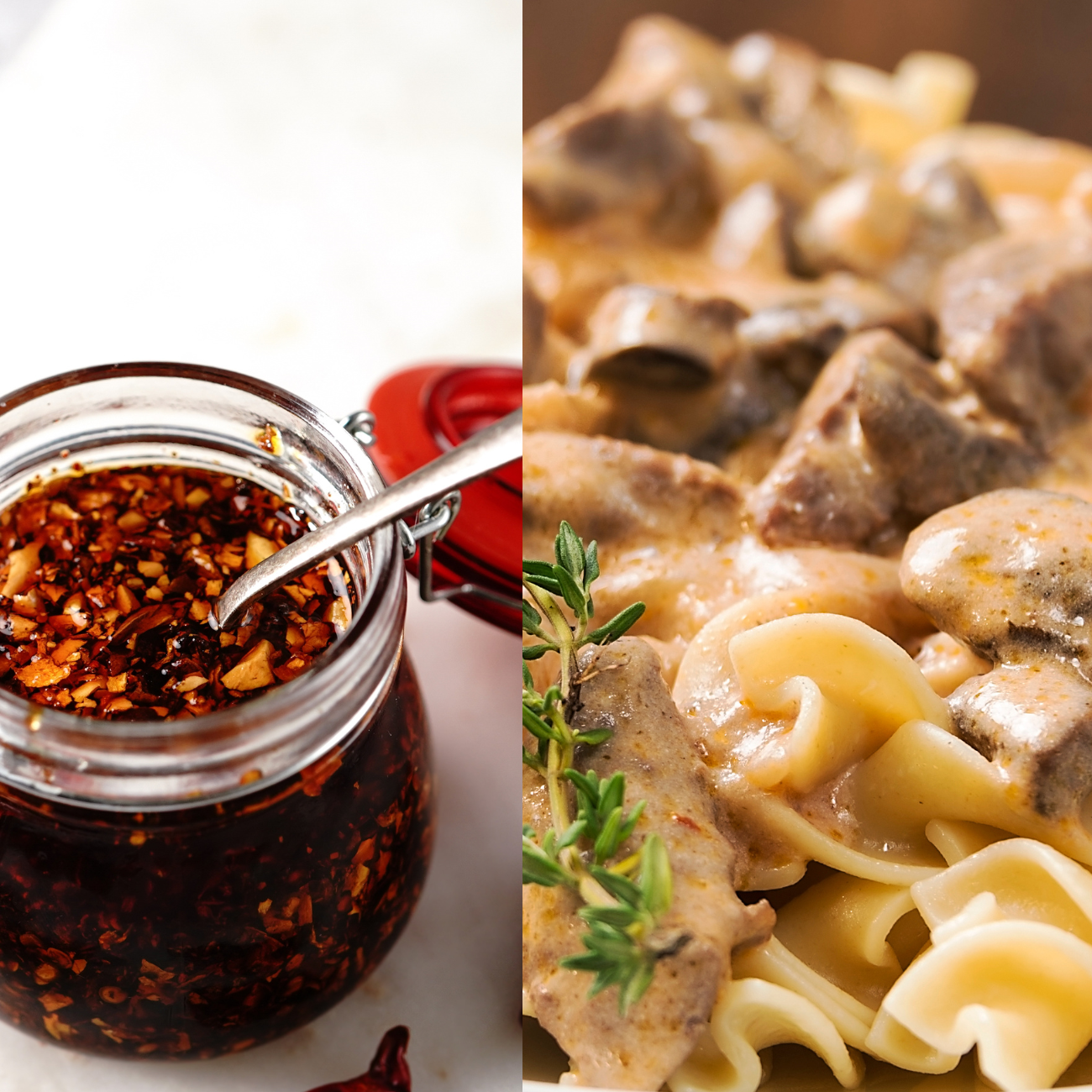As the winter months roll in, the need for warm, hearty meals becomes more pronounced. When the temperatures drop, nothing beats a comforting dish that can warm you up from the inside out. One such dish that has gained popularity among vegan and non vegan communities alike is Mushroom Stroganoff. This delectable dish not only offers a delightful blend of flavors and textures but also serves as a nutritious option that can easily be made at home. In this article, we will explore the origins of stroganoff, the benefits of a plant based diet, a deep dive into the ingredients, cooking methods, variations, and tips for making the best vegan mushroom stroganoff.
The Origins of Stroganoff.
Stroganoff, a dish that has captivated taste buds for centuries, is believed to have originated in Russia in the mid 19th century. Traditionally, beef stroganoff consisted of sautéed pieces of beef served in a creamy sauce, often accompanied by mushrooms and onions, and served over noodles or rice. The dish quickly gained popularity, spreading throughout Europe and adapting to local tastes and ingredients.With the rise of plant based diets and a growing awareness of the ethical and environmental implications of meat consumption, many chefs and home cooks have begun to experiment with vegan versions of classic dishes. Mushroom Stroganoff is one such adaptation that retains the essence of the original while being entirely plant based.
The Benefits of a Plant Based Diet.
In recent years, a plant based diet has garnered significant attention for its numerous health benefits. Incorporating more plant based meals into your diet can lead to a reduced risk of chronic diseases such as heart disease, diabetes, and certain cancers. Moreover, a vegan diet is generally lower in saturated fat and cholesterol, which can improve overall heart health.In addition to health benefits, choosing a plant based diet can also have a positive impact on the environment. Animal agriculture is a leading contributor to greenhouse gas emissions, deforestation, and water pollution. By opting for vegan meals like Mushroom Stroganoff, you’re making a conscious choice to reduce your environmental footprint.
Ingredients for Vegan Mushroom Stroganoff.
The beauty of Mushroom Stroganoff lies in its simplicity and the ability to customize it according to your taste preferences. Below are the key ingredients you’ll need to create a delicious vegan version of this classic dish:
- Mushrooms: The star of the dish, mushrooms provide a rich, umami flavor and a meaty texture. Varieties like cremini, shiitake, or portobello are excellent choices, but feel free to mix and match to suit your taste.
- Pasta: Traditional stroganoff is often served over egg noodles; however, any type of pasta works well, including whole wheat, gluten free, or even spiralized vegetables for a lighter option.
- Onions and Garlic: These aromatics lay the foundation for flavor in the dish. Sauteing them until they are soft and fragrant enhances the overall taste of the stroganoff.
- Vegetable Broth: This adds depth and richness to the sauce, ensuring that the dish is packed with flavor.
- Creamy Base: For the creamy element, you can use coconut cream, cashew cream, or a store bought vegan sour cream. Each option brings its unique flavor and texture.
- Seasonings: Dried herbs and spices such as thyme, paprika, salt, and pepper will elevate the dish, creating a wonderful balance of flavors.
Cooking Method.
Creating a vegan mushroom stroganoff is straightforward and can be completed in about 30 minutes. Here’s a step by step guide to preparing this warming dish:
- Cook the Pasta: Start by boiling water in a large pot and cooking the pasta according to package instructions. Once cooked, drain and set aside.
- Saute Aromatics: In a large skillet, heat olive oil over medium heat. Add the chopped onion and minced garlic, cooking until softened and fragrant.
- Add Mushrooms: Incorporate the sliced mushrooms into the skillet. Sauté until they are browned and have released their moisture, which enhances their flavor.
- Season: Stir in the soy sauce, paprika, and thyme, allowing the flavors to meld for a minute.
- Create the Sauce: Pour in the vegetable broth and bring the mixture to a low simmer. After a few minutes, add your creamy base (coconut cream or cashew cream) and stir until well combined.
- Combine with Pasta: Add the cooked pasta to the skillet and mix until it is coated in the creamy mushroom sauce. Let it cook for an additional minute to heat through.
- Serve: Dish out the mushroom stroganoff into bowls and garnish with freshly chopped parsley for a pop of color and freshness.
Variations of Mushroom Stroganoff.
The beauty of cooking lies in experimentation. Here are some variations and additions you can consider to make your mushroom stroganoff unique:
- Add Vegetables: Incorporate additional veggies such as spinach, kale, or bell peppers for added nutrition and flavor.
- Different Mushrooms: Explore various mushroom varieties. For example, adding a mix of wild mushrooms can enhance the dish’s complexity.
- Nuts and Seeds: For extra creaminess, consider blending soaked cashews into your sauce or topping with toasted sunflower seeds for a delightful crunch.
- Herbs: Fresh herbs like dill, chives, or parsley can brighten the dish and add a fresh flavor.
- Spice it Up: If you enjoy a bit of heat, consider adding crushed red pepper flakes or a dash of hot sauce to the mix.
Tips for Making the Best Vegan Mushroom Stroganoff.
- Use Fresh Ingredients: Fresh mushrooms yield better flavor than canned or frozen varieties. Look for firm, plump mushrooms for the best results.
- Don’t Overcrowd the Pan: When sautéing mushrooms, avoid overcrowding the skillet. This allows for proper browning and prevents steaming.
- Taste as You Go: Adjust seasonings throughout the cooking process to achieve the flavor profile you desire.
- Serve Immediately: Mushroom stroganoff is best enjoyed fresh. If it sits for too long, the pasta may absorb the sauce, leading to a drier dish.
- Store Leftovers Properly: If you have leftovers, store them in an airtight container in the refrigerator for up to three days. Reheat gently on the stovetop with a splash of vegetable broth or water to loosen the sauce.
Conclusion.
Mushroom Stroganoff is a delightful vegan dish that captures the essence of comfort food while promoting a plant based lifestyle. With its rich flavors, creamy texture, and satisfying nature, it’s a perfect choice for winter dinners. As we embrace the cold season, let this dish be a staple in your kitchen, offering warmth and nourishment for body and soul.
Questions And Answer’s:
- How do you think the transition to a plant-based diet can impact overall health and wellness?
Transitioning to a plant based diet can lead to numerous health benefits, including a reduction in the risk of chronic diseases like heart disease, diabetes, and certain cancers. It can also promote weight management, improve digestion, and enhance overall energy levels due to an increase in fiber, vitamins, and minerals. Additionally, a plant-based diet encourages mindfulness about food choices, which can lead to healthier eating habits. - What variations of mushroom stroganoff would you like to try, and why?
I would love to experiment with adding different types of mushrooms, such as shiitake or oyster mushrooms, to see how their unique flavors contribute to the dish. Additionally, incorporating greens like spinach or kale would not only add color but also boost nutritional value. I might also try a spicier version by adding jalapeños or red pepper flakes for an extra kick. - How do you feel about using different types of mushrooms in your cooking?
Using different types of mushrooms can greatly enhance the flavor profile and texture of a dish. Each variety has its unique characteristics; for example, portobello mushrooms provide a meaty texture, while shiitake mushrooms offer a deep umami flavor. Experimenting with different mushrooms can elevate a simple dish to new culinary heights, making it exciting and flavorful. - In what ways do you think comfort food can be redefined through a vegan lens?
Comfort food can be redefined through a vegan lens by focusing on the flavors and textures that evoke warmth and satisfaction. Classic dishes can be made healthier and more sustainable without sacrificing taste. By using plant based ingredients, we can create comforting meals that align with ethical and environmental values. This redefinition allows for creativity in the kitchen, encouraging the use of diverse ingredients that may not have been traditionally included in comfort food. - How can you incorporate more plant based meals into your weekly meal planning?
To incorporate more plant based meals into weekly meal planning, I can start by designating specific days for vegan meals, such as “Meatless Mondays.” I can also explore new recipes and batch cook to ensure I have ready to eat meals throughout the week. Including a variety of legumes, grains, and seasonal vegetables in my shopping list will provide versatility and excitement in my meals. Additionally, I can involve family and friends in the cooking process, making it a fun and educational experience.

